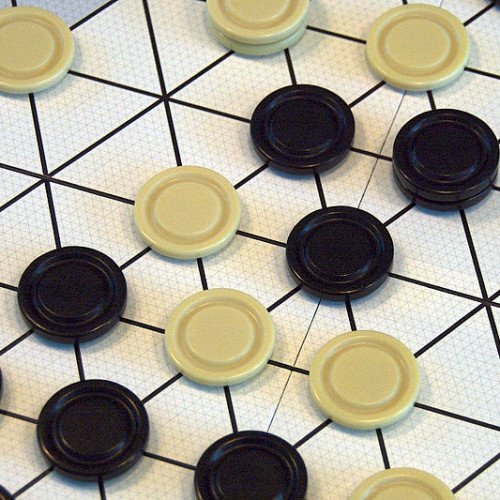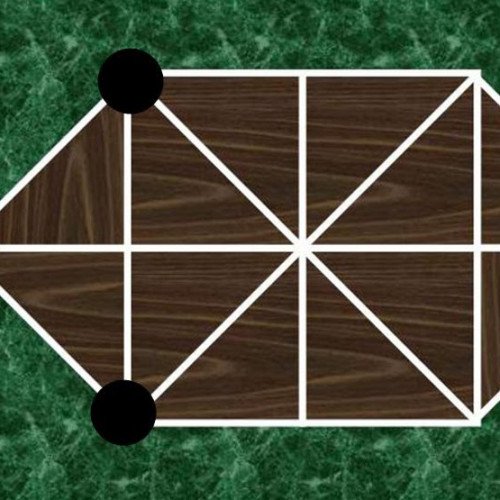GIPF VS HARE AND HOUNDS

GIPF
GIPF is an abstract strategy board game by Kris Burm, the first of six games in his series of games called the GIPF Project. GIPF was recommended by Spiel des Jahres in 1998. Players take turns pushing tokens (one player taking black, the other white) from the edge of the tri-gridded, hexagonal board, with pieces already in play pushed in front of the new placements rather than allowing more than one piece on any space. The game is lost if a player has no more tokens to play, and since each starts with a set number of tokens, it is clearly necessary to recycle pieces already positioned to keep playing. This is achieved by contriving to line up four pieces of the same colour in a row on the board, at which point those tokens are returned to their owner, and any opposing tokens extending from the line of four are captured. Because a single player will often move several pieces and change numerous on-board relationships, it is remarkably difficult to predict the state of the board more than one turn ahead, despite GIPF being a game of perfect information. Play tends to be highly fluid and there is no real concept of long term territorial or spatial development. The game can be expanded with extra pieces (available separately) called Potentials, which allow different kinds of moves to be made. These are named for the other games in the GIPF Project, though the other games are not actually necessary in order to utilise the Potentials named after them.
Statistics for this Xoptio

HARE AND HOUNDS
Hare games are two-player abstract strategy board games that were popular in medieval northern Europe up until the 19th century. In this game, a hare is trying to get past three dogs who are trying to surround it and trap it. The three dogs are represented by three pieces which normally start on one end of the board, and the hare is represented by one piece that usually starts in the middle of the board or is dropped on any vacant point in the beginning of the game. Hare games are similar to Bear games and hunt games. One side has more pieces than the other with the larger side attempting to hem in the smaller side. The smaller side though is usually compensated with more powers. Where Hare games differ is that the hounds can only move forward or sideways, and not backwards. The hunters in the Bear games can move in all directions. Furthermore, the dog in the Hare games cannot capture any of the hares, unlike the tigers, leopards, jaguars, and foxes in the hunt games which can capture their respective prey counterparts. There are several different Hare game boards depending upon the country of origin. Many preferred the narrow double-ended spearhead-like boards with orthogonal and diagonal lines running through them. There were several variations on this design. However, one in Denmark used a round board, and another design is found in Latvia. Hare games are referred to by different names. In 19th century France, a hare game that was popular among the military was called The Soldiers' Game. The dog is sometimes referred to as a hound, and hence the alternative title to this game as Hare and hounds. Other names are French Military Game, Game of Dwarfs, The Devil among tailors, and Trevolpa or Volpalejden . As the rules of the game are simple to program, there are many electronic implementations of the game. The second link below allows you to play this game. In this computer game, the hares and hounds are reversed. Instead, it is the hounds attempting to surround and immobilize the hare.